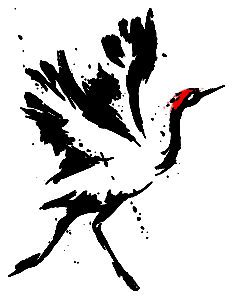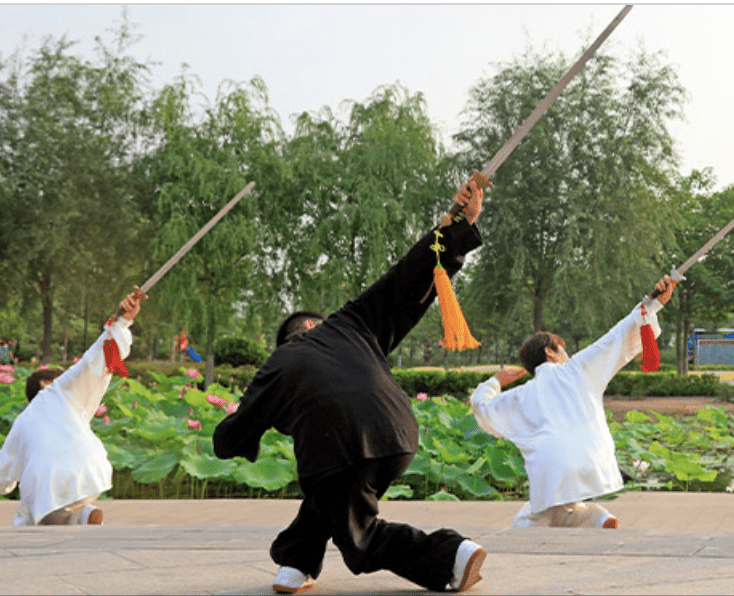 One of the most common questions I’m asked is, “What is the difference between Tai Chi vs. Qigong?” My short answer is that they are mostly the same. Tai chi originated from Qigong and can therefore be thought of as a form of it. Of course, they aren’t exactly the same or they wouldn’t have different names.
One of the most common questions I’m asked is, “What is the difference between Tai Chi vs. Qigong?” My short answer is that they are mostly the same. Tai chi originated from Qigong and can therefore be thought of as a form of it. Of course, they aren’t exactly the same or they wouldn’t have different names.
Let’s first look at the ways in which they’re similar. To do that, let’s start with the definition of Qigong.
Tai Chi vs. Qigong definintions:
Simply put, Qigong is energy work, or attainment over time and through effort in the use of energy. The word Qi (or Chi) doesn’t translate perfectly to “energy,” but if we remember that the body requires energy in order to move and that movement itself is a form of energy, it can be used comfortably enough for now. A deeper explanation of the true nature of Chi is beyond the scope of this article, so I’ll write one on it in the future.
Qigong’s purpose
The overarching goal of any Qigong is to strengthen the body and improve overall health. This involves two major components:
– The first is learning how to move energy through the body. We sink our minds down into our bodies in order to discover what the energy feels like, and then we learn how to lead it through specific pathways in the body.
– And second, we gradually increase the amount of energy circulating the body. The extra energy not only adds to our effective strength, but it also provides extra energy that can be used to fight off disease and repair any damage to the body.
Qigong forms aim to unify the body, mind, and breath through coordinated movements. However, there are thousands of varieties that are used for many different purposes. Examples range from deepening relaxation, to sharpening focus, to healing a specific injury, to hardening the body against attacks (as in external, or hard, Qigong).
Tai Chi vs. Qigong: Tested by time
Qigong is a very old artform. Many of the original forms have been passed down from generation to generation over the last 2,500 years! Imagine holding a family heirloom that was hand-made by your great grandmother from 50 generations ago. But, Qigong is not a static artifact like grandmother’s heirloom. Rather, it’s been lovingly shaped and molded along it’s long journey. Each new generation received the form, tested it thoroughly for practicality, and made adjustments where they saw fit. The result is an exercise that works with our natural human physiology to nurture our health in a very practical sense.
Physiology working with physics
Qigong movements show us how to move our bodies in ways that keep our joints aligned in the most advantageous and safe position throughout. When performed properly, the body should feel good — at no point should there be any pain in the joints.
On a more subtle level, Qigong teaches us how to minimize the amount of energy we use in our movements. Many of us unconsciously spend a lot of energy on nervous and unproductive habits. When we slow down and pay attention, we find that we can free up that tied energy, allowing us to do more of the things we love.
So, what makes Tai Chi different?
In Qigong, we focus heavily on our individual internal environment. Tai Chi takes that same internal awareness, but coaxes us to extend beyond our own bodies. Through working with a partner (even an imaginary one), we learn to apply our internal energy to the outside world. This can be a very effective method for increasing and strengthening our ability to utilize the Qigong energy. We can then use our new-found strength to accomplish any sort of physical task — from lifting heavy objects, to being on our feet for extended periods of time, to tending a garden, or even defending ourselves in a physical confrontation.
Tai Chi vs. Qigong: The recap
Tai Chi and Qigong are similar because they both seek to improve our overall health. Both artforms encourage us to be increasingly aware of our internal environment, nurturing it to excellent health. And, Tai Chi can be used to extend that awareness beyond the individual through partner exercises involving gentle push/pull exchanges.
Check out this video of Sifu Jeff Patterson of Portland, Oregon demonstrating a simple Qigong pattern:
What do you think?
We’d love to hear your ideas or questions regarding the differences and similarities between Tai Chi vs. Qigong. Leave a comment below.

